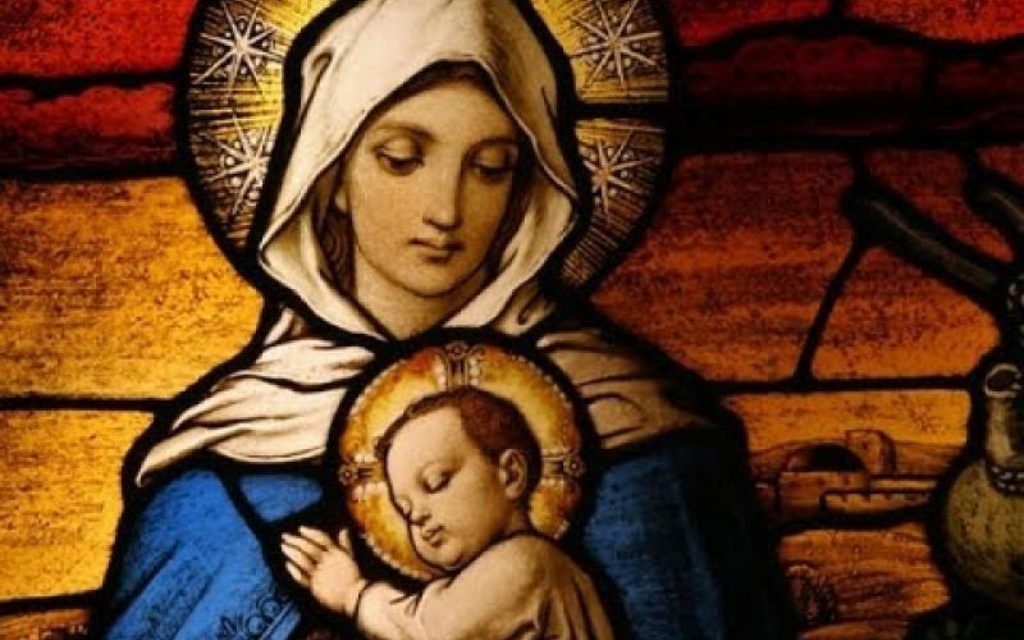In Hungary, King St. Stephen inaugurated the Assumption of the Virgin Mary as a holiday.
The Assumption of the Blessed Virgin Mary (Assumptio beatae Mariae Virginis) is the biggest Marian feast of the Catholic Church, which is celebrated on August 15, and is also the feast of the patron saint of Hungary. Its oldest name is dormitio (falling asleep) or pausatio (resting), i.e. the day of Mary's slumber and death.
The dogma of the Assumption of the Virgin Mary - according to which the mother of Jesus, after her death, was admitted to heaven together with her body and soul, to the glory of her resurrected son - was announced on November 1, 1950 by XII. Pope Pius with his apostolic constitution Munificentissimus Deus (The Most Generous God).
Assumption Day is a mandatory holiday, which means that Catholics must attend mass on this day.
The story goes back to the ancient church, that Jesus Christ did not allow the body of his mother, Mary, to die on earth, but resurrected her shortly after her death and took her to heavenly glory.
Written records attest to the existence of the holiday from the 7th century, Mary's Assumption into Heaven in 847 IV. Pope Leo made it an official holiday. Its Hungarian name appears for the first time in the Munich codex of 1446: "The raising of Marianac."
The story of Mary's death and ascension into heaven was a favorite theme of medieval church art, codex literature, religious folk books, and epic songs.
According to tradition, Jesus informed his mother of the hour of his death three days in advance. Mary's body was laid in a rock-cut tomb on the Mount of Olives, and the apostles came from different parts of the world on clouds for her funeral. Tamás did not appear until the third day, and after he wanted to see the deceased, they opened the grave, which emitted a pleasant smell of balsam. The coffin, on the other hand, was empty, with only death shrouds in it. While the apostles were dreaming about this, they saw Mary's body in the sky as the angels raised it to heaven accompanied by singing.
In Hungary, King St. István inaugurated the day of the Assumption of the Blessed Virgin Mary.
The king who founded the state called the royal council to Fehérvár every year on August 15 to hold legislation. Towards the end of his life, already ill, he offered the country to the Virgin Mary on this day, and died on this day in 1038.
As a result of the offering, the Regnum Marianum idea prevailed in Hungarian public law, according to which Hungary is the country of Mary, so Hungarian statehood is intertwined with the cult of Mary from the beginning. The feast of Our Lady is also the day of Hungary's patron saint, the time of pilgrimages to Mary's shrines, processions, and farewells.
There are many legends and folk customs associated with Assumption Day. Above all, this is the Hungarian tradition of the Vigil of Mary, which is based on the belief that
on this day, at sunrise, you can see the woman clothed in the sun (Mulier Amicta Sole), about whom the New Testament reports in the 12th chapter of the Book of Revelation.
Another well-known tradition is the making of Mary's coffin made of flowers or the consecration of flowers. The consecrated fragrant herbs and flowers were later either placed in the coffin of the dead so that he, like Mary, would be glorified, or they were placed in the foundation of the house under construction, in the cradle of the baby, in the bed of the young couple.
It is believed that the harvest can be inferred from the weather on this day: if the day of the Assumption shines, the wine harvest will be good.
In the folk calendar, the period between the "between the two women", i.e. the Assumption of the Blessed Virgin Mary on August 15 and the day of the Virgin on September 8, is considered magical. It was then that the medicinal herbs had to be picked, and the winter belongings and clothes had to be aired out so that the moth did not fall into them. It was connected to fertility magic that at this time they "planted the hens" to lay all their eggs, and collected the eggs "between two women" that remained in the lime for a long time.
MTI
Cover image source: romkat.ro













